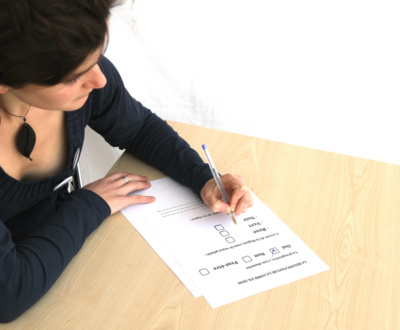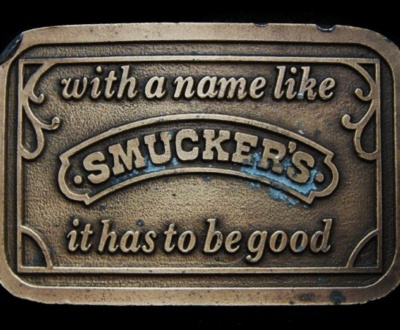Are You Using This Key Marketing Success Metric to Analyze Your Business?
- July 26, 2013
- Blog
Now that marketers and business people have entered the age of “Big Data,” new terminology is being used to evaluate what is considered a successful marketing campaign. Before we were able to track seemingly everything our customers did, like we can today, marketing campaigns typically were judged by simple formulas and metrics, like the total number of impressions or the average cost per impression. Now that marketers have hard drives and Petabytes full of data about their customers, a new lexicon is emerging to make sense of the numbers.
Here is one of these new terms:
ROMI or “Return on Marketing Investment”
The term Return on Marketing Investment (ROMI) has emerged recently in a response to the shift from a product-centric view of the market to a customer-centric view of the market. The reason a different formula is needed compared to the traditional Return on Investment (ROI) measurement used in the finance world is that there is no tangible asset purchased when you spend money on a marketing campaign.
Financial investors buy things like factories or technologies, which are physical goods, while investments in marketing produce advertisements, loyalty programs, and other non-physical items. Because of this difference, it’s essential to analyze a marketing campaign using a ROMI framework instead of traditional ROI.
Before we look at the specific formula, let’s think about the calculation in layman’s terms. Essentially what you want to know is “did my marketing campaign make me money, after accounting for the cost of producing my products, and if so how much?” If you don’t factor in the cost of producing the additional products that you sell, you could wind up thinking you made money when in fact you didn’t.
For example, if your marketing campaign makes you an additional $5,000 in revenue, but in order to produce the additional products to sell to make that revenue you also added $6,000 in labor and material costs to your ledger, your campaign lost money even though it produced an increase in revenue.
Now that we understand the ROMI formula in plain English, let’s look at the formula mathematically. The first thing we need to do is define the terms that it uses by asking a few questions:
- How much additional revenue did the campaign produce? If you normally make $200,000 per quarter, and after running your campaign you made $300,000, then this would be $100,000. It’s called the “Incremental Revenue Attributable to Marketing” or IRAM.
- How much of the sale price goes towards covering the materials to produce the product or service? If it costs you $40 in time and materials to produce your products, and you sell them for $100, then you need 40% of the revenue from each product to cover the cost for making it. This means only 60% of the revenue from each product’s sale counts towards your marketing campaign’s results, and this 60% is called the “Contribution Margin” or CM.
- How much did you spend on your marketing campaign? This is, somewhat intuitively, called the “Marketing Spending” or MS.
Now that you know the terms, here is the formula:
ROMI = (IRAM * CM – MS) / MS
Explanation: You start by multiplying how much extra revenue you made from your marketing campaign by the amount of that money you actually get to keep after factoring in the cost of producing the items. So if you made an additional $100,000 compared to your normal sales after running your marketing campaign, and you only get to keep 60% of that cost because the other 40% went to time and materials for producing the products you sold, then your left with a $60,000 increase that can be connected to your marketing campaign. From there you need to subtract the cost of your marketing campaign, so if you spent $45,000 then you’d get $15,000, which tells you that your marketing campaign paid for itself and then pulled in an extra $15,000 in additional sales.
So now you know spending $45,000 on marketing will generate an extra $15,000, after accounting for both the cost of producing the products and the campaign itself. If you just divide $15,000 by $45,000 now, you’ll get a percentage increase that is your ROMI. In this case it’s 33%. So you know that, for every dollar you spent on this marketing campaign, you made $1.33!
This is author biographical info, that can be used to tell more about you, your iterests, background and experience. You can change it on Admin > Users > Your Profile > Biographical Info page."
About us and this blog
We are a digital marketing company with a focus on helping our customers achieve great results across several key areas.
Request a free quote
We offer professional SEO services that help websites increase their organic search score drastically in order to compete for the highest rankings even when it comes to highly competitive keywords.
Subscribe to our newsletter!
More from our blog
See all postsRecent Posts
- 4 Reasons You Should Be A/B Testing Your Email Marketing Campaigns May 15, 2018
- The Secret Strategy for Using Surveys to Boost Conversions (It’s Not What You Think) February 2, 2017
- Advanced Brand Positioning Strategies December 31, 2016





Pingback: Marketing Success Metrics (Part 4): Soft Measurements | SEO and Reputation Management Agency
Pingback: Marketing Success Metrics: A Look At Customer Lifetime Value | SEO and Reputation Management Agency
Pingback: Recency, Frequency, and Monetary Value (RFM) | SEO and Reputation Management Agency